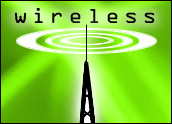
With cell phones now becoming popular fixtures among the masses, securing coverage in even the most remote geographic areas has become an important goal for service providers. Cell towers are expensive, however, costing from US$100,000 to more than $1 million to set up, and present logistical problems, such as clearing local regulations and finding suitable placement.
Now, startup companies Extend America and Space Data are trying to alleviate such problems with cell towers supported by weather balloons stationed in the stratosphere. “Because cell coverage is still not ubiquitous and can be difficult to deploy in some areas, there has been a lot of talk about new approaches, such as using weather balloons and airplanes to reach uncovered areas,” noted Allen Nogee, principal analyst at In-Stat/MDR.
Confronting Challenges
The two companies use standard weather balloons, which cost about US$50 each, to carry special purpose cell towers, which are small — 10 cubic inches, and light — less than 12 pounds. The balloons travel 20 miles above the earth, well above commercial airliner pathways. Because of their high flying position, the devices cover a larger area — from 50 miles to 500 miles — than traditional cell towers.
The companies have taken different tracks to promoting their technology. Space Data has concentrated on communications and monitoring challenges that the oil industry faces, launching balloons in Texas, Oklahoma, Louisiana, Arkansas and New Mexico that help companies track their vehicles and monitor the production of their oil wells and pipelines. In addition, the company is working with the U.S. military on possible strategic uses for the technology.
Reaching Into Parks and Camp Sites
Extend America has focused on the telecommunications market and helping cellular suppliers fill in coverage area gaps. “Now that carriers have deployed cell stations throughout metropolitan areas, they are searching for ways to reach more remote locations like Montana, as well as camp sites,” stated Neil Strother, an industry analyst with market research firm the NPD Group.
Former North Dakota Gov. Ed Schafer heads Extend America, which has focused on delivering services first in that state and has a strategic agreement with Sprint Nextel. Not surprisingly, the North Dakota state government has expressed interest in the services.
While the new approach should be less expensive and eliminate many of the zoning hoops that carriers often have to jump through, they also raise new logistical issues. Currently, there are questions about how well the systems will perform in bad weather and how much difficulty carriers may have in making sure the balloons stay on track.
“The biggest problem is keeping the cell tower aloft,” noted Ira Brodsky, president of market research firm Datacomm Research. Also, the balloons need to be constantly replaced. Once launched, they swell from six feet in diameter to 30 feet as they gain altitude. The earth’s stratospheric winds should push the latex balloons eastward at a rate of about 30 mph. How well the signal will work as the balloon moves is questionable. Consequently, carriers are experimenting with different models — some that rely solely on the balloons and others that include a mix of balloons and terrestrial cell stations.
Maintenance Costs
Eventually, the balloons rise so high that they are out of transmission range and, at some point, they disintegrate into the atmosphere. Carriers want to salvage the cell towers, so the balloons are equipped with a jettison mechanism that sends them slowly to earth via parachutes. The towers are outfitted with Global Positioning Systems, so their flights can be tracked. After the towers land, the carriers need to send runners to retrieve them so they can be used again. How many of the cell towers will be lost or damaged during their return trips is unknown.
In addition to the short-term nature of theit flights, the cell towers have to deal with issues such as battery power. The current systems are outfitted with batteries that last about eight to 10 hours. Consequently, carriers need to be constantly launching and recovering their cell towers.
The end result is that this approach represents an ongoing expense. Estimates are that a company would need to spend $100,000 to $300,000 annually to support this service.
Because of the expense, this approach is expected to take root first in areas that are far off main highways or away from cities. “The areas that still lack cell coverage are spread out and sparsely populated,” In-Stat’s Nogee told TechNewsWorld. North Dakota, for instance, has a population of about 650,000 and about 20 percent of the residents do not have access to cellular services.
Seizing the Opportunity
In addition to rural areas in the U.S., the firms are looking at foreign countries that have underdeveloped telecommunications infrastructures and rugged terrain as potential customers. GlobeTel Communications has been working with the government of Colombia, for example, to use unmanned communications blimps hovering 10 to 13 miles above the earth to support cellular services there.
At the moment, the balloon proponents remain entrepreneurial ventures. Space Data claims to have raised $33 million from private investors. Extended America raised $9.5 million from companies including Ignition Partners, Catalyst Investors, Cascade Investment and Greenspun Corporation, and has also secured a $11.2 million loan from the U.S. Department of Agriculture Rural Utilities Service.
Whether or not that money will be sufficient to keep their businesses afloat will become clear as the year progresses and these firms begin marketing their services more aggressively.











































